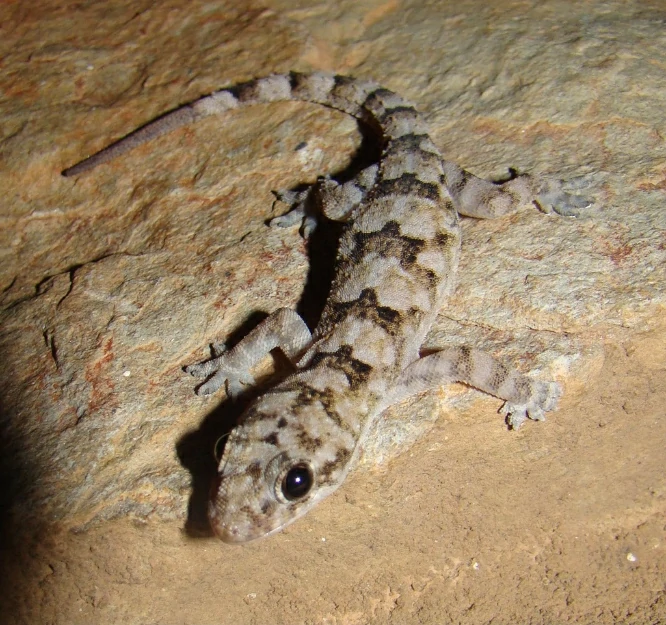If you’ve ever kept more than one house gecko in the same tank, you might have noticed something strange. Maybe one suddenly disappears, or you see a bigger one snapping at a smaller one’s tail.
At first, you might think they’re just playing or chasing bugs. But then it hits you, could one gecko actually be eating the other?
Yes, house geckos can eat each other, especially when food is scarce, space is tight, or one is much smaller than the other. They don’t usually hunt each other on purpose, but if the opportunity comes up (like a hatchling moving too close to a hungry adult) it can happen really fast. Geckos mostly eat insects, but they’re also opportunists.
It sounds harsh, but this behavior is more about survival than aggression. In the wild, the fight for food and space is tough, so instinct takes over.
When those same instincts play out in a tank, things can get messy if you’re not careful.
How Common Is Cannibalism in House Geckos?
Cannibalism might sound shocking, but it’s actually pretty common among small reptiles, including house geckos. It’s not because they’re “mean”, it’s just instinct.
In the wild, they’ll eat almost any small creature that fits in their mouth, and sometimes that happens to be another gecko.
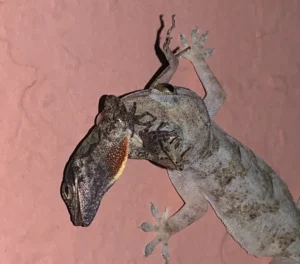
Adults are more likely to eat hatchlings than other adults. Hatchlings are tiny, fragile, and move quickly; basically everything that triggers a gecko’s hunting response.
If an adult is hungry and spots movement, it reacts before realizing it’s chasing its own kind.
So while you won’t see adult geckos ganging up on each other, it’s not unusual for a big one to snack on a baby if the chance arises.
Why Do House Geckos Eat Each Other?
There are a few main reasons, and they all come down to instinct and environment.
1. Hunger
If food is scarce, geckos get desperate. They’re built to chase fast-moving prey, so a smaller gecko scurrying by can look just like a juicy insect.
2. Size difference
House geckos grow fast, but not all at the same pace. If you keep adults and hatchlings together, the gap can be huge. A hungry adult might see a baby gecko as a meal.
3. Stress or overcrowding
When too many geckos share the same space, stress goes up. They compete for hiding spots and food. This tension can lead to biting or attacks.
4. Territorial behavior
Male geckos especially are territorial. They’ll chase away rivals, and in small tanks this can turn violent. Sometimes they don’t stop until the smaller gecko is hurt or dead.
So cannibalism might look like aggression, but it’s really just natural behavior happening in the wrong setting.
What Happens When a Gecko Eats Another Gecko
It’s not always obvious at first. You might just notice one gecko missing, or you’ll find bite marks or a lost tail.
Sometimes the smaller gecko gets eaten entirely; other times only part of it is bitten before it escapes.
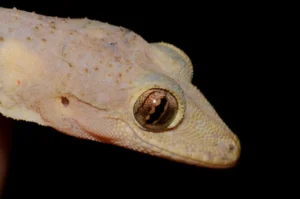
Signs of fighting include wounds, missing limbs, or bloody marks.
Another sign is stress. Geckos that hide constantly or refuse to eat may be terrified of their tankmates.
Even without eating, a dominant gecko can make life miserable. Chasing and intimidation alone can stress others.
Are All House Geckos Cannibalistic?
Not exactly. Not every gecko will eat another, and some can live together peacefully, especially if they’re similar in size and well-fed.
But you can’t count on it. Each gecko has its own personality and tolerance.
Some keepers house females together because they’re less territorial. Others find that even females fight if space or food is limited.
Males almost always fight if you put two together. Cannibalism isn’t guaranteed, but it’s always a possibility.
How to Prevent Cannibalism in Captivity
You can’t erase instinct, but you can create conditions where geckos don’t feel the need to act on it. Here’s how:
-
Separate adults and hatchlings. Never keep babies with adults.
-
Feed them regularly. A well-fed gecko is less likely to attack another. Offer live insects like crickets or roaches every other day.
-
Provide enough hiding spots. Each gecko should have a place to retreat. Add rocks, bark, and plants to break up the enclosure visually.
-
Avoid keeping multiple males together. Males are territorial and will fight.
-
Watch for bullying. If one gecko always chases or bites another, separate them immediately.
These steps reduce the risk dramatically.
What About Baby Geckos?
Baby house geckos are most at risk. Adults will often eat them if they share the same tank. Even other hatchlings might bite weaker ones if space or food is limited.
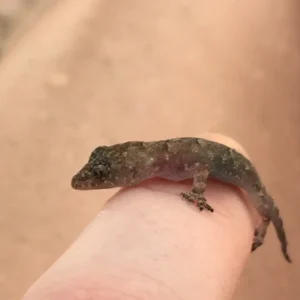
If you’re breeding geckos, move the eggs to a separate container before they hatch. Once they hatch, raise the babies in small groups or individually.
After a few months, they’ll be strong enough for a bigger tank without as much risk.
The first few weeks are critical. Leaving babies with adults overnight can wipe out an entire clutch.
How to Tell If Your Geckos Are Fighting or Playing
House geckos don’t really “play” like mammals. Chasing, biting, or tail twitching is almost always dominance or aggression.
Look for these behaviors:
-
Tail flicking: a warning or irritation
-
Biting or tail grabbing: aggression
-
Chasing: dominance, especially between males
-
Hiding constantly: the weaker gecko is stressed and scared
Even if no one is hurt yet, constant chasing or hiding is a warning. Separate geckos early before things turn violent.
Do Geckos Ever Eat Each Other in the Wild?
Yes, but it’s rare. In the wild, there’s plenty of space and insects, so geckos rarely need to fight or eat each other.
In areas with scarce food, like dry seasons, larger geckos might eat smaller ones. It’s survival, not cruelty. A hungry gecko reacts to motion without thinking.
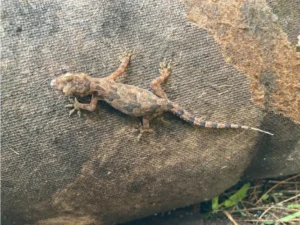
This behavior is more common in cities or human-made environments, where space is tight and geckos cluster around lights.
Are Some Species More Likely to Eat Each Other?
Yes. Some species are more aggressive or territorial. The common house gecko (Hemidactylus frenatus) is bold and sometimes pushy, even driving native geckos away.
Other species, like the Mediterranean house gecko (Hemidactylus turcicus), are usually less aggressive but can still eat hatchlings if the chance appears.
Species matter a bit, but the main factor is environment. Too little food or space makes any gecko more dangerous to others.
Can Geckos Regrow If They’re Attacked?
If a gecko is bitten but survives, it can regrow its tail, but the new tail looks different and doesn’t have the same color or structure. Severe injuries can be fatal.
That’s why prevention is better than treatment. Once serious fighting starts, you can’t always save both geckos.
Keep injured geckos alone in a clean, quiet tank until they heal.
Why Feeding and Space Make the Biggest Difference
House geckos are easy pets, but that doesn’t mean they all live together peacefully. Most problems, including cannibalism, come from overcrowding or hunger.
If each gecko has enough food and hiding places, they usually stay calm. But if one feels threatened or hungry, instinct takes over. Keepers say, “If it fits in their mouth, it’s food.” That sums up how geckos think perfectly.
Conclusion
So, do house geckos eat each other? Sometimes, yes, especially when they’re hungry, crowded, or different in size. It’s not cruelty or anger; it’s instinct.
The good news is it’s easy to prevent. Keep geckos well-fed, give them enough space, and don’t mix adults with hatchlings. Do that, and your geckos can live safely together.
House geckos are simple creatures. They don’t think about right or wrong, just survival. Once you understand that, it’s much easier to keep them happy, healthy, and away from each other’s dinner plans.
Hi, my name is Ezra Mushala, i have been interested animals all my life. I am the main author and editor here at snakeinformer.com.

